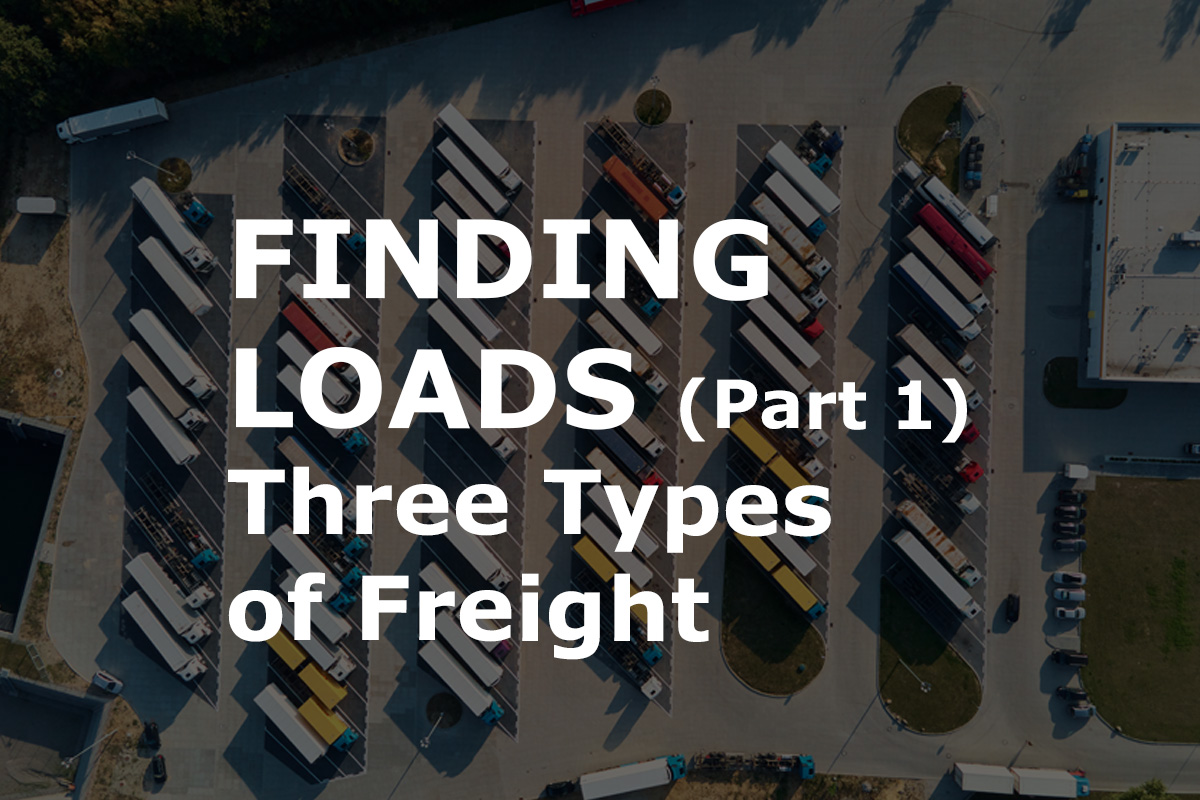There are three types of freight: contract freight, spot-market freight, and relationship freight.
One of the most important skills to develop in the transportation industry is learning how to find loads.
This is especially true for owner-operators and small fleets that are just starting out.
The biggest problem when finding loads is knowing the good ones from the bad ones. When do you pass and when do you accept certain loads?
With current technology and the excess numbers of trucks on the road in many transport lanes, carriers must be as fast as possible or have great relationships to win loads with good rates.
To build these relationships, you first need to understand the three types of freight and why they matter when negotiating rates.
- Contract freight
- Spot-market freight
- Relationship freight
What is contract freight or direct shipper freight?
Contract freight, otherwise known as direct shipper freight, are a type of fixed, long-term truckload pricing for consistent freight volumes, and make up 85% of all loads.
Basically, shippers commit to a certain load volume, and carriers offer fixed transportation rates. As a carrier, if you are moving this type of cargo, you are expected to move the load at the rate you agreed upon previously.
For example, Pepsi knows they have “x” amount of loads they want to send in the year. They work with their trusted carriers or brokers to handle 100 or so loads at a determined rate on various routes or lanes.
But, as we have seen, the market can quickly shift in either direction, hurting or benefiting the carrier.
When diesel prices or other costs rise, it can squeeze a carrier’s bottom line because they are now paying more for fuel on a previously contracted rate.
In this same scenario, the shipper is protected because the contract has locked in a transportation rate giving them control over their expected costs for the year. So, carriers cannot raise the rate to offset the increase in fuel prices.
However, on the positive side for carriers, if the market is on a down trend and you have a lot of contract connections, the new rates will drop slowly compared to the wild swings in the spot market.
[Related: New Trucking Companies Can Pay-Per-Mile For Insurance]
What is spot market freight?
Do you ever wonder why a broker might not have all the details of a load, like appointment windows, customer characteristics or weight?
It goes to the heart of what is spot market freight.
Traditionally, spot freight is used to find rates for a last-minute shipment or expedited loads. These are loads available on the market for a very short time, usually gone in 60 seconds, and are usually offered by freight brokers.
This type of freight typically makes up 10-15% of all loads.
Many brokers are often blind-copied in an email with other brokers for these quick loads and is a race among brokers to land the load.
So, there is not a lot of time to ask for details or heavily negotiate these loads. Additionally, spot rates are more volatile and change rapidly.
This is why knowing operational costs and lanes are important, so you can quickly analyze a profitable load that the broker is recommending and try and grab it.
If carriers are constantly fishing the spot market, they need to expand your load types by getting contract loads directly from shippers.
What is relationship freight?
This is the happy blend of contract and spot market freight.
If you want to win good loads regularly, then build great relationships with brokers or shippers and prove you are consistent and reliable.
This includes making fair rate negotiations, always being on time with loads, and quick at responding with positive communication skills.
If you build your relationships well, the broker will offer you more premium loads, help you get loads in lanes you regularly run, and help you avoid deadhead miles.
This is a win-win relationship.
Key differences:
| CONTRACT FREIGHT | SPOT MARKET FREIGHT | RELATIONSHIP FREIGHT |
| Long-term pricing | Short-term pricing | Short-term or Long-term |
| Stable | Dynamic | Stable |
| Typically, better for shippers | Typically, better for carriers | Good for both carriers and shippers |
| Set with a bid | Set with a one-time quote | Fair Rate negotiations |
Why knowing freight types helps you negotiate with brokers
Did you know that the average owner operators work with 20-40 brokers each year!
This is because brokers have spent the time and energy to create relationships that many owner-operators and small carriers may not have the skill to do to earn direct shipper loads.
When it comes to contract freight, brokers get the bulk agreement for a certain number of loads at the agreed rate that come from the shippers directly.
Brokers then often look to make 5-15% margins when negotiating with carriers.
However, when the market drops there is not much margin for brokers because diesel prices and other costs rose, but their contract stayed the same.
Carriers need to know that when working with brokers on these loads, there may not be much wiggle room for their profit and your profit.
Eventually, these contracts get renegotiated and if the market improves, margins will rise for brokers and there will be much more wiggle room to negotiate with brokers on rates.
With spot-market freight, speed wins.
Sometimes brokers do not have a lot of details about the load because they were blind-copied in a mass email and are in a race with others to win that load.
Carriers may not be able to negotiate back and forth multiple times for a few hundred dollars because the lost time with slow negotiations means the broker may not get the load.
Also, the broker may be getting 10-15 calls per second for this load.
This is why it is important to know your profitability, your lanes, and trends happening so you can quickly negotiate with a broker at the right price.
Sometimes, you need to be willing to just walk away.
For relationship freight, brokers want reliability and trust with a carrier. You need to build that trust by being consistent at finishing loads on time, running regular lanes, and being quick and reasonable with negotiating rates.
In our next article, we will cover how to negotiate with brokers and what should be included in a carrier packet and how to present yourself when trying to become a preferred carrier for direct customer loads.
[See Part 2 in our Finding Loads series: How To Use Brokers, Load boards, and Government Contracts]
[See Part 3 in our Finding Loads series: How to Find and Negotiate With Shippers for Direct Customer Freight]
Starting your own trucking company?
If you’ve got the vision to start a trucking company, now is the time to make that vision reality.
With CNS by your side, our startup roadmap will help you prevent the many headaches new trucking companies face when getting off the ground to year three of your business.
One secret in the insurance industry is that carriers who prove their low-risk safety history will get much lower preferred rates as they go into their third year of business.
If you’re just getting started we can help obtain all the relative information you need to be compliant and legal. If you are an established company, we can help add new or delete vehicles from your account, track and renew your vehicle registrations, title management, and more.
Get started with your New Venture Quick Quote >>> CNSINSURES.COM/NEW-VENTURE-QUICK-QUOTE
For more information, contact us at 888.260.9448 or info@cnsprotects.com.






